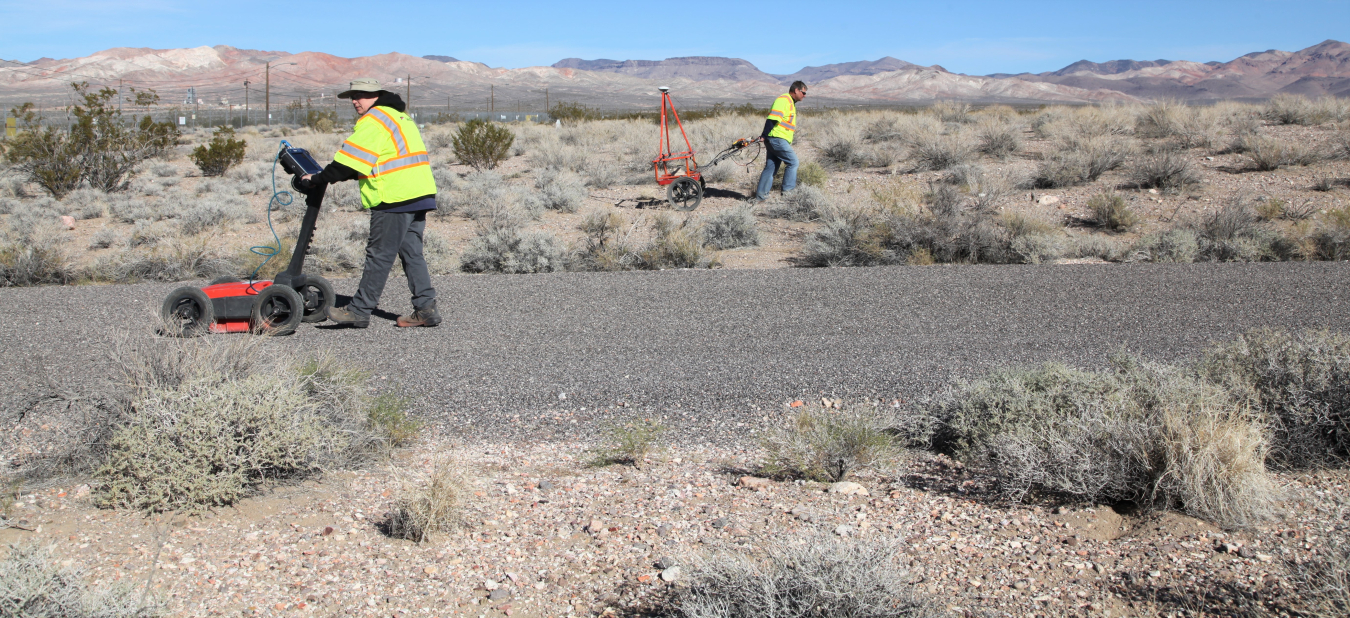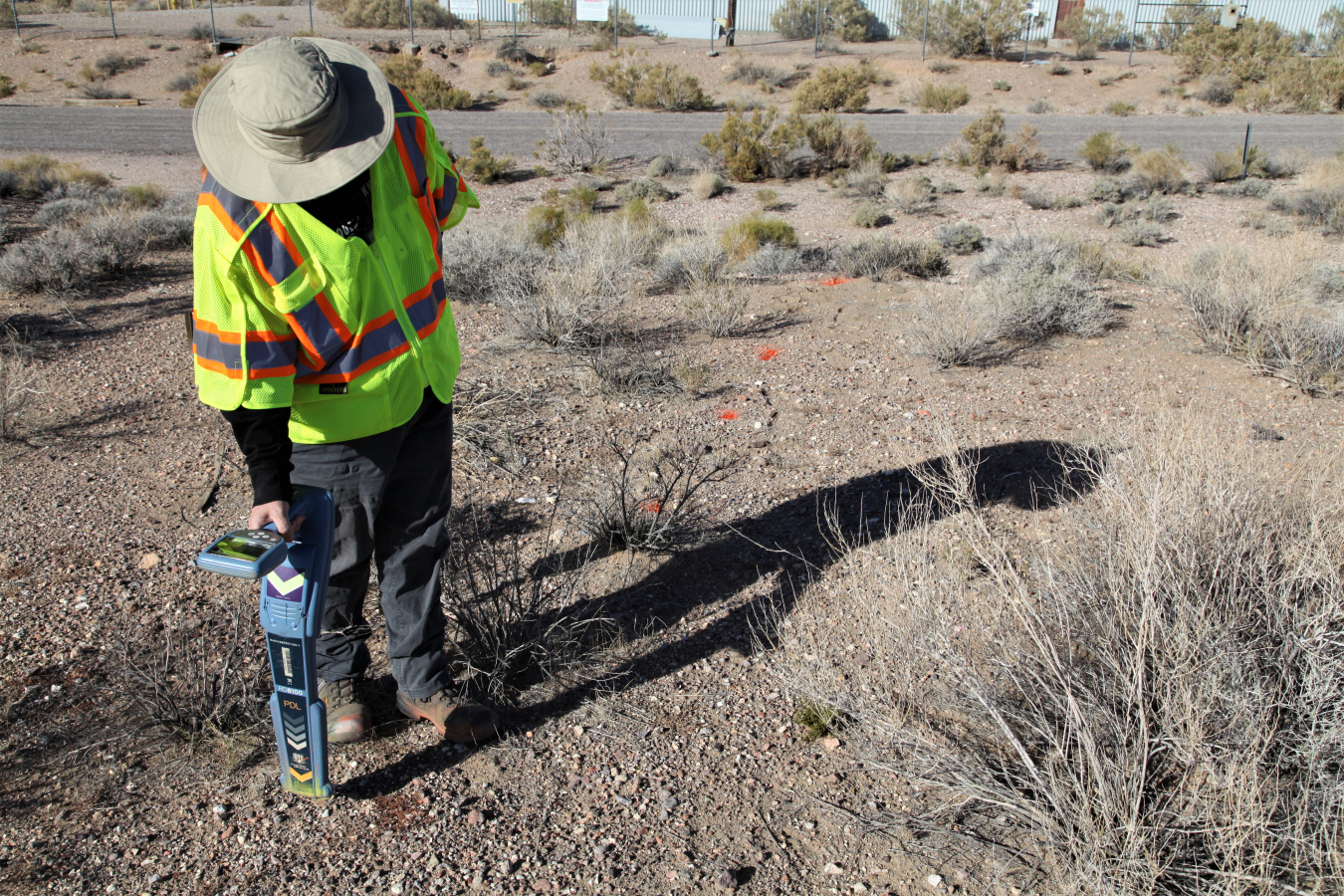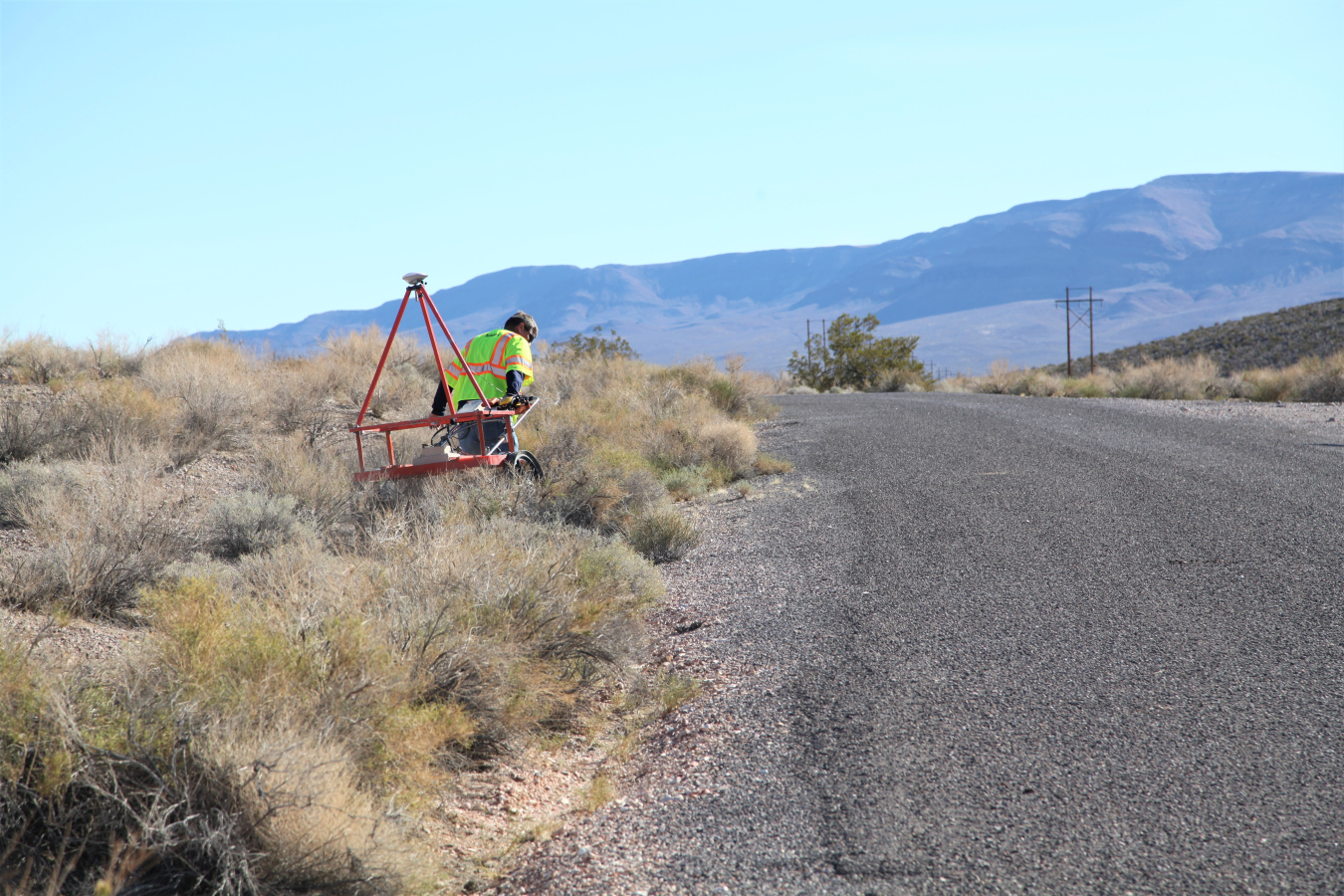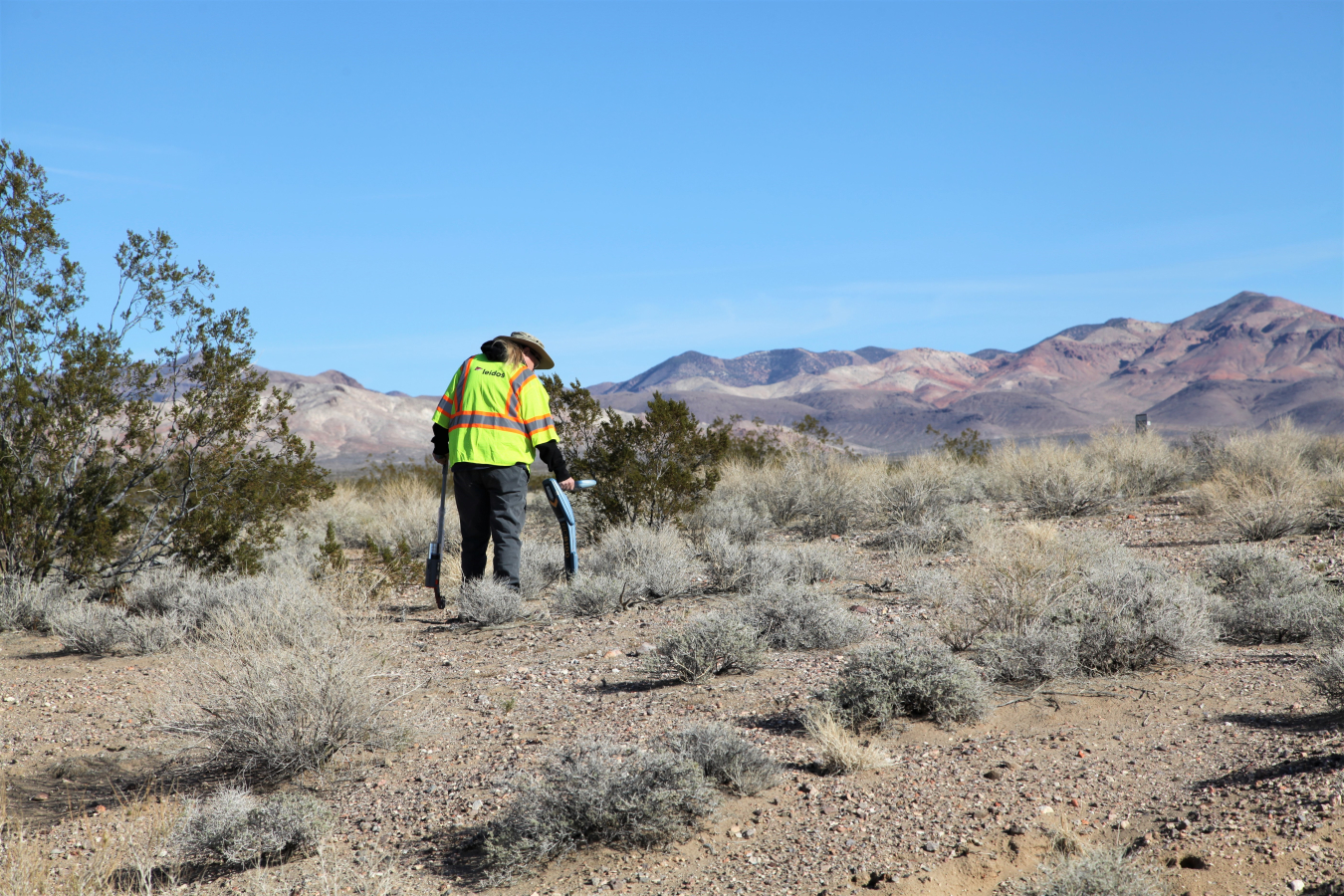
LAS VEGAS – Twenty-four years ago, Beth Williams and Jeff Warren performed underground surveying work at the Nevada National Security Site (NNSS) to help with the eventual shutdown of a facility used in the development of the U.S. space program.
Now, the two senior geophysicists are back at the NNSS. This time, they are doing underground surveying work on behalf of the EM Nevada Program at the Engine Maintenance, Assembly, and Disassembly (EMAD) Facility.
"It feels like we've come full circle," said Williams.
Williams and Warren took time recently to discuss the labor being conducted at the EMAD site. Constructed in 1965 at a cost of more than $50 million, it was then the largest hot cell in the world. EMAD and Test Cell C (TCC) were part of the Nuclear Rocket Development Station at the NNSS, which supported the development and testing of nuclear rocket engines from 1957 until 1973. Demolition and closure of those two facilities are the ongoing focus of EM Nevada’s current industrial sites mission at the NNSS.

Williams and Warren began by traversing the area and performing a passive locator survey. Passive locators can detect subsurface objects such as energized electrical lines or buried cables and pipes. Next, Warren used an electromagnetic metal detector with a mounted GPS, tracking responses through many laps over the area.
“With this data, the team will be able to create color-enhanced contour maps that indicate a geographical representation of the underground region,” said EM Nevada Deputy Program Manager Bill Wilborn.

Meanwhile, Williams performed a ground penetrating radar (GPR) mapping of the area. GPR uses radar technology to track anomalies under the surface and the depth and location of underground shapes it encounters. The different methods are designed to create a system of checks and balances, cross-checking findings across multiple devices. The result will be a much deeper understanding of what lies beneath EMAD and surrounding land.
“This is important work,” said Construction Manager Chase Morgan. “This data will help us identify underground utilities, which will help us plan our future work activities.”

For Warren and Williams, the job was a reunion of sorts. Their work in 1998 took place at the Reactor Maintenance, Assembly, and Disassembly (R-MAD) Facility, one of more than 1,800 industrial sites on the NNSS that have been successfully brought to closure. They thought back fondly on their R-MAD experience, where they stayed in dormitories and relied on a single phone line to communicate. But they also marveled at how unchanged the land was, preserved through decades of federal stewardship under EM.
“It's like a time capsule,” Williams said.
Geophysical mapping has been completed at TCC, and the team estimated the process would take about two weeks at EMAD.
To receive the latest news and updates about the Office of Environmental Management, submit your e-mail address.
